The recent oil correction has opened a window for us income investors to grab big(ger) dividends at big(ger) discounts! Today we’re going to take full advantage.
In a moment, we’ll discuss a 3-click energy dividend portfolio that yields 5.9%. Plus, we have some price upside in addition to these payouts, thanks to the pullback in the energy sector.
There’s no doubt the goo has taken a header, dropping from $75 a barrel in mid-July to $62 as I write this. But that’s overdone: consider that our “crash ’n’ rally” scenario (which I’ve been arguing with anyone who will listen for 16 months now) is still in early days.
To recap:
If history is any guide, oil—and shares of the companies that produce and ship it—should bounce and then rally for another two or three years, at least. Energy prices tend to “crash ’n’ rally.” The crash is quick, while the ensuing rally lasts for years. Here’s how it played out in 2008 and 2020:
- Demand for oil evaporates and its price crashes (2008 and 2020).
- Energy producers scramble to cut costs, so they cut production aggressively (2009 and 2020).
- The economy slowly recovers (2009 and late 2020), energy demand picks up, but supply lags.
- And lags. And lags. And the price of oil rallies until supply eventually meets demand (2009 to 2014 and 2020 to present).
Here’s what the pattern looked like back in 2008–’12:
Last Crisis-Driven Bounce Lasted Years (With Ups and Downs)
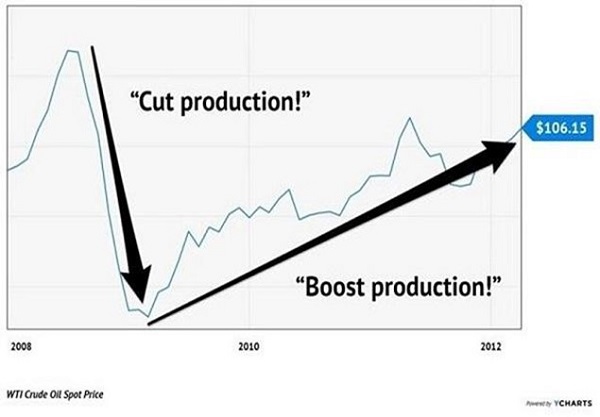
This time around, we’ve already worked this pattern to great effect in my Contrarian Income Report service: in April 2020, we pounced on pipeline operator ONEOK (OKE) and rode it to a 93% total return (including dividends) in just 16 months:
Early Crash ’n’ Rally Play Pays Off
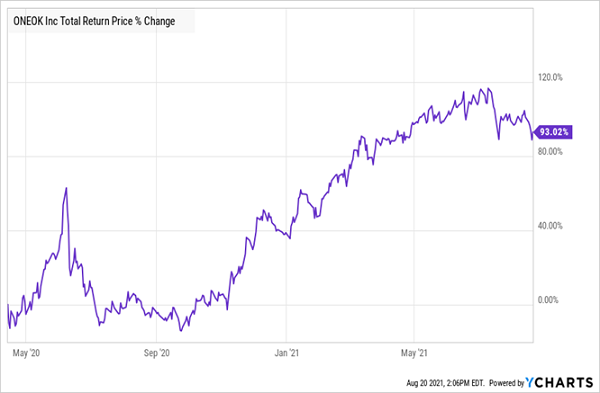
When we bought ONEOK, it was yielding an unbelievable 11.8%, as the price had been butchered in the April 2020 panic (as yields and prices move in opposite directions).
That made buying the stock a low-risk proposition. Assuming no dividend growth, you’d recoup your initial investment in dividends alone in eight-and-a-half years!
If you look at the right side of the above chart, you can see our open buy window today. In addition to ONEOK (which still yields a gaudy 7.6%), the oil washout has goosed dividends on a raft of other stocks, too. Here are three to take a close look at:

Oil Dividend #1: Marathon Petroleum (MPC)
Marathon has all the energy angles covered: when oil prices are low, its 13 refineries get a profit boost because oil is their main feedstock. When oil is high, rising demand fills the pipes at its midstream business, which ships and stores crude and refined products.
Plus it’s tilting toward renewables through seven facilities it either owns outright or through joint ventures. Its Dickinson Renewable Diesel facility in North Dakota, for example, pumps out 184 million gallons of diesel produced from organic matter every year.
Then there’s the dividend: Marathon yields 4.3%, more than triple what the typical S&P 500 stock pays. Management also held the payout steady through the nightmare year that was 2020, nicely positioning us for a dividend hike: the free cash flow (FCF) backstopping the payout is bouncing back nicely:
Cash Flow Jumps—Dividend Next?
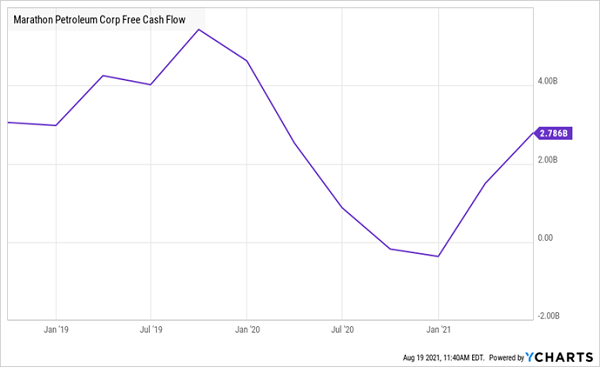
But the real reason I’m keeping tabs on Marathon is that its “Dividend Magnet” is about to power up again. If you’ve been reading my columns on Contrarian Outlook, you know what I’m talking about: the very predictable tendency of a company’s share price to track its dividend. I’ve seen it happen over and over again!
Look at this chart:
Marathon’s “Dividend Gap” Shows Our Upside
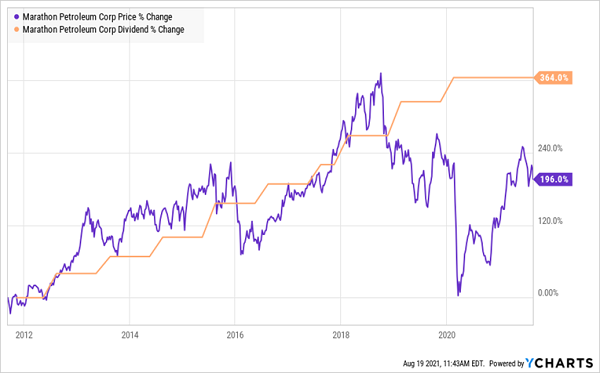
You can talk about volatile oil prices all you want, but there’s no denying that Marathon’s dividend hikes were the main driver of its share price up to the eve of the 2020 crash. The pattern is unmistakable!
And now you can see that the share price is making a lunge back toward its dividend. It’ll get there. In the meantime, the gap between the two shows our upside.
Oil Dividend No. 2: Chevron Corp. (CVX)
Chevron is in a similar position as Marathon: with its US shale assets and deepwater reserves, it’s a giant on the production side. Plus, it owns a tanker fleet and a 3,000-mile pipeline network in the US, along with storage capacity of 2.6 million barrels.
One key difference is you’re getting a considerably higher yield: 5.7%, to be exact. And we can thank this latest pullback for that: as recently as mid-June, Marathon’s yield was a much lower 4.7%.
That higher payout is backstopped by the company’s FCF, which, as with Marathon, is roaring back as demand picks up.
Chevron’s Cash Flow Bounces …
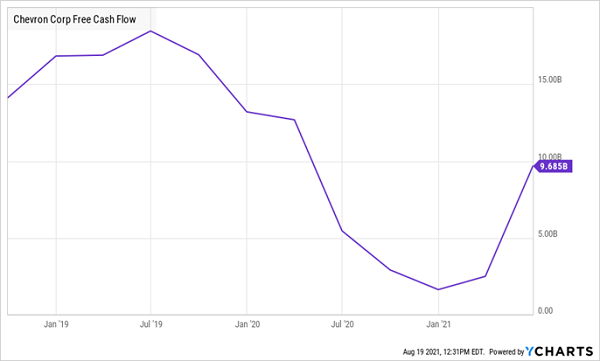
Chevron does pay out a little over 100% of trailing-12-month FCF as dividends, which obviously isn’t sustainable, but that 12-month period includes the downtrodden third and fourth quarters of 2020. If we zero in on the second quarter of 2021, dividends accounted for a much healthier 50% of FCF. And as we just saw, too, FCF is in a solid uptrend.
This opens the door to more dividend hikes—and you can see below that the company’s share price tracked its dividend higher until the oil-price rout of 2014, then found its way back. We’re looking at the same dynamic playing out again in 2020/’21, with 65%+ price upside on the table here.
… and Powers Up Its Dividend Magnet
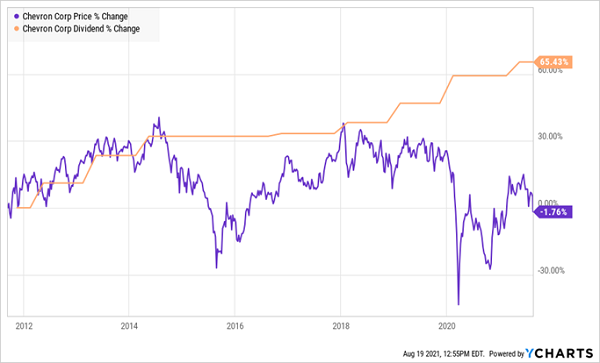
That bounce will be helped by management’s plan to revive its buyback program starting in the third quarter, a move that will take $2 billion to $3 billion of shares off the table each year. Reducing the share count juices earnings per share and other per-share metrics, helping push share prices higher, too.
The timing of this repurchase plan is no accident—management sees that the stock, trading at 14.6-times forward earnings, is way too cheap. We should take our cue from them.
Big Oil Dividend No. 3: ClearBridge MLP and Midstream Fund (CEM)
Finally, let’s grab one of the biggest dividends in the energy business—a monster 7.7% payout—with the ClearBridge MLP and Midstream Fund. It’s a closed-end fund (CEF) that holds master limited partnerships (MLPs)—companies that mainly own pipelines and storage tanks.
Giants in the MLP business, like Enterprise Products Partners (EPD), Williams Cos. (WMB) and Energy Transfer LP (ET) dominate the fund’s portfolio.
If you’ve bought MLPs before, you know the hassle of the complicated K-1 forms they send you for reporting your dividend income to the IRS. But CEM gets you around that; it sends you a simple Form 1099 instead. (Note that ONEOK, which we talked about earlier, is not an MLP. It’s a regular corporation that sends you Form 1099 instead.)
The other great thing about CEFs is there’s one number that tells us if they’re expensive or cheap: the discount to NAV (net asset value, or the value of the stocks in the fund’s portfolio). As I write this, CEM boasts a 13.7% discount, but that discount was about half what it is now—around 7%—just before the pandemic hit, so we’ve got plenty of built-in upside here.
Let me leave you with a note on performance: thanks to the expert management team at ClearBridge, CEM has dominated the MLP benchmark, the Alerian MLP ETF (AMLP), on a total-NAV-return basis (so based on CEM’s portfolio performance alone) coming out of this crisis. It’s not even close!
Human Managers Crush Their Benchmark
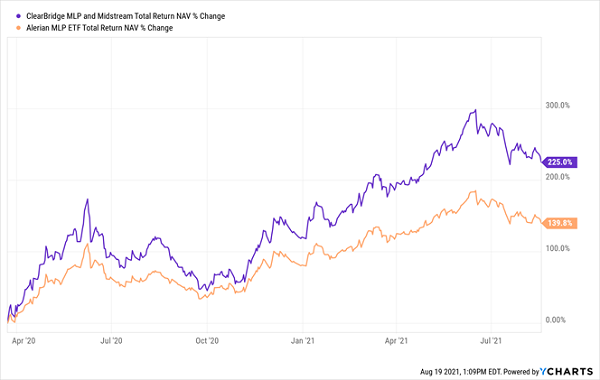
Put all three of these picks together and you’ve got an “instant” 3-buy energy portfolio with huge upside potential (like the 65%+ gains we talked about with Chevron. Plus you’re getting a 5.9% average dividend and superb diversification across the energy market, too.
“Amp Up” Your 5.9% Dividend to a HUGE 7% (Monthly!) Payout
A 5.9% average dividend is terrific, but what if I told you we can do even better—and we don’t have to rely solely on one sector (energy, in this case) to do it?
I’m guessing you’d be interested.
Well, you can do just that with my “7% Monthly Payer Portfolio.” As the name says, it pays you 7% dividends, and your payout drops into your account every single month—right in line with your bills!
And this payout is backed by one of the most diversified collections of stocks and funds out there. It hands you stocks (from tech to retail), corporate bonds, municipal bonds, real estate investment trusts, preferred shares and more.
Add it all up and you get incredible price stability (with upside!), which lets you enjoy your 7% monthly dividend in peace—something we can all use these days.
I’m ready to give you a guided tour of this stout monthly dividend portfolio now. Click here and I’ll reveal everything you need to know about each income-generating buy inside, including names, tickers and my complete analysis of each company’s (or fund’s) management team.
